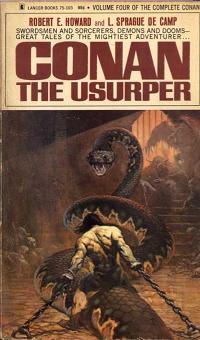The Graveyard of Conan
by wjw on March 28, 2016
A 3200-year-old bronze-age battlefield has been excavated next to the Tollense River near the Baltic Sea. The result: 10,000 bones of at least 130 individuals, plus some horses. The bodies, all men, were hacked with swords, stabbed with spears, and shot with bronze arrowheads.
Archaeologists have only opened 450 square meters, which suggests that there’s a lot more to find.
 If these warriors wore any armor beyond deer hides, it was looted from the bodies. No bronze swords were found, but bodies seemed to have been hacked with swords, so any swords were looted. No bows were found, but whatever bows were used were strong enough to fire a bronze arrowhead into a human skull.
If these warriors wore any armor beyond deer hides, it was looted from the bodies. No bronze swords were found, but bodies seemed to have been hacked with swords, so any swords were looted. No bows were found, but whatever bows were used were strong enough to fire a bronze arrowhead into a human skull.
Weapons found included a variety of wooden clubs, bronze axes, flint and bronze arrowheads, and bronze spearpoints. The warriors also wore jewelry of tin, bronze, and gold.
There are of course no records of battles being fought in the area, and it surprised people to find such a large war-band in an area with what was assumed to have a fairly low, non-urban population. Even more surprising was the fact that, once the trace isotopes in the teeth were analyzed, was the discovery that few of the dead warriors were from the surrounding area. Some isotopes suggest that they were raised on a diet heavy in millet, which was grown not around the Baltic, but in southern Europe. (DNA evidence, once collated, may give us a better clue where they actually originated.)
Plus, a number of the bodies showed signs of wounds that had been healed. Which suggests this was a plundering, multiethnic war band of professional freebooters, not unlike those Conan the Barbarian was always joining in Robert E. Howard’s stories.
Given that I am a romancer by profession, it’s not hard for me to invent a romance for these characters to star in. Spurred by widespread migration, upheaval, and destruction that saw the Trojan War, the fall of the Mycenaeans, and the invasion of Egypt by the Sea Peoples, this group of hard-bitten adventurers lived by plunder and taking slaves.
While it’s possible that two such bands met and and fought each other on the banks of the Tollense, I think it’s more likely that their invasion provoked a response from indigenous peoples, who used their superior knowledge of the local environs to lure the invaders into the constricted terrain of the narrow Tollense valley, where they were ambushed, surrounded, and killed. Conan got his comeuppance, and the locals had a happy ending, at least until the next bunch of invaders turned up.
I shall look forward to more revelations.
 If these warriors wore any armor beyond deer hides, it was looted from the bodies. No bronze swords were found, but bodies seemed to have been hacked with swords, so any swords were looted. No bows were found, but whatever bows were used were strong enough to fire a bronze arrowhead into a human skull.
If these warriors wore any armor beyond deer hides, it was looted from the bodies. No bronze swords were found, but bodies seemed to have been hacked with swords, so any swords were looted. No bows were found, but whatever bows were used were strong enough to fire a bronze arrowhead into a human skull.
Despite it’s lurid title, Eric H. Cline’s 1177 B.C.: The Year Civilization Collapsed is an excellent and sober review of the evidence for and against that view of the period.
Thanks for the heads up on this — very interesting, particularly in the light of attempting to inform people that no matter what else might be wrong and stupid about the Vikings series, it wasn’t weird that an Asian slave would show up in the northland. Maybe no all that common, but not weird.
Slave trade routes were on the same trade routes as everybody else’s trade — and invasions too, for that matter.
The Mycenaeans seem to have maintained a slave economy that depended particularly on the labor of slave women, who served the royals, the priests, and were involved in textile production. (Though my information on this is very much out of date, and perhaps new tablets have been translated that would call this into question.)
The slave population could be increased by plundering other kingdoms and peoples, which explains a lot of Greek mythological history, if you ask me.
The fate of captured soldiers and defeated lands was that those who lived through it tended to be sold into slavery. Though usually, if the victors had sense they left enough people and communities intact to farm in order get benefit from what they conquered.
Even in Egyptian records as well as those other well-recognized empires of ancient history, that high borns were taken as slaves to serve the high borns of the victors — that was how war and invasion worked. You lose you’re booty. You win the others are booty. Look at the embed of Cassandra in the Agamemnon cycles.
There were more opportunities to get out of slavery though — legal ones too.
Comments on this entry are closed.